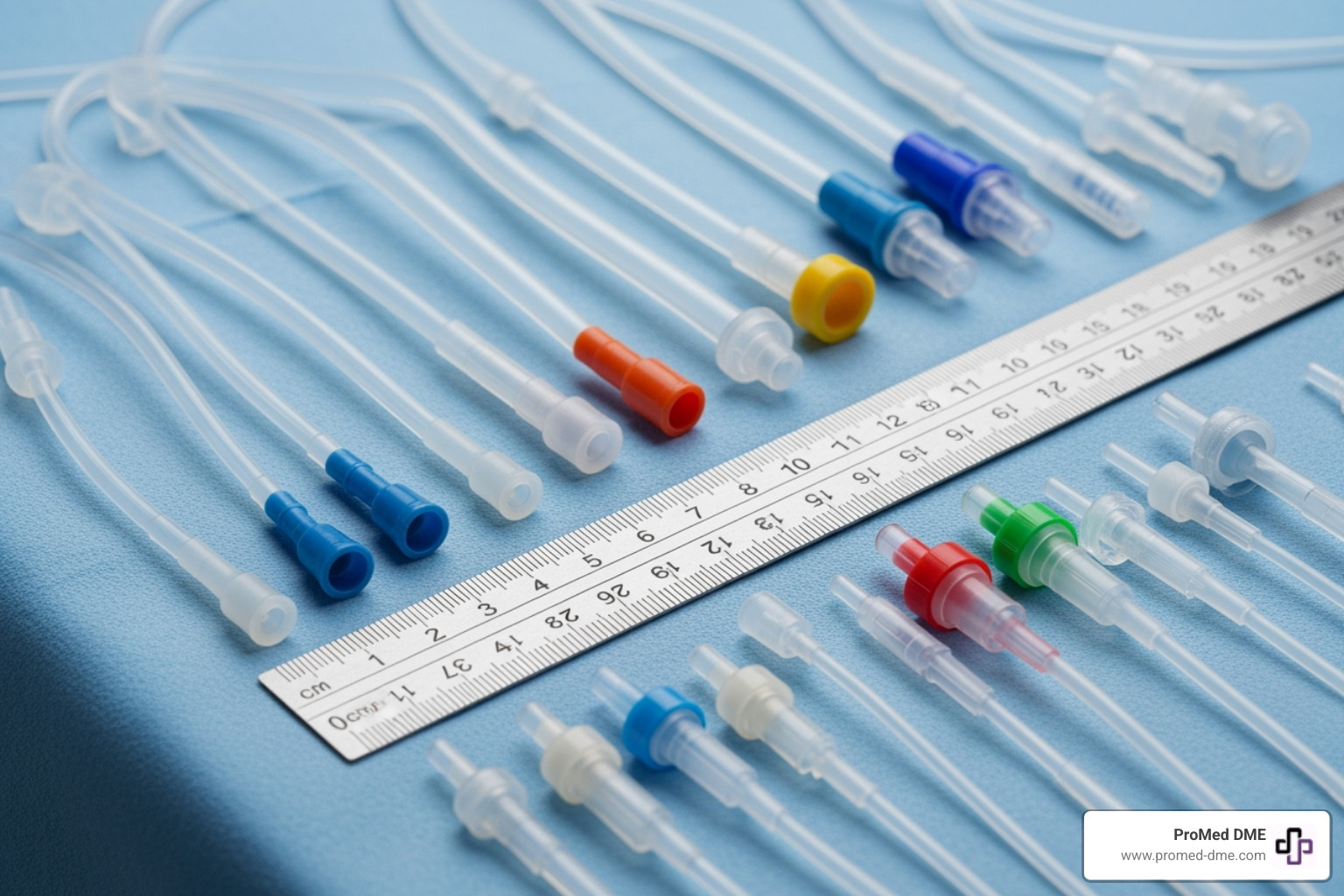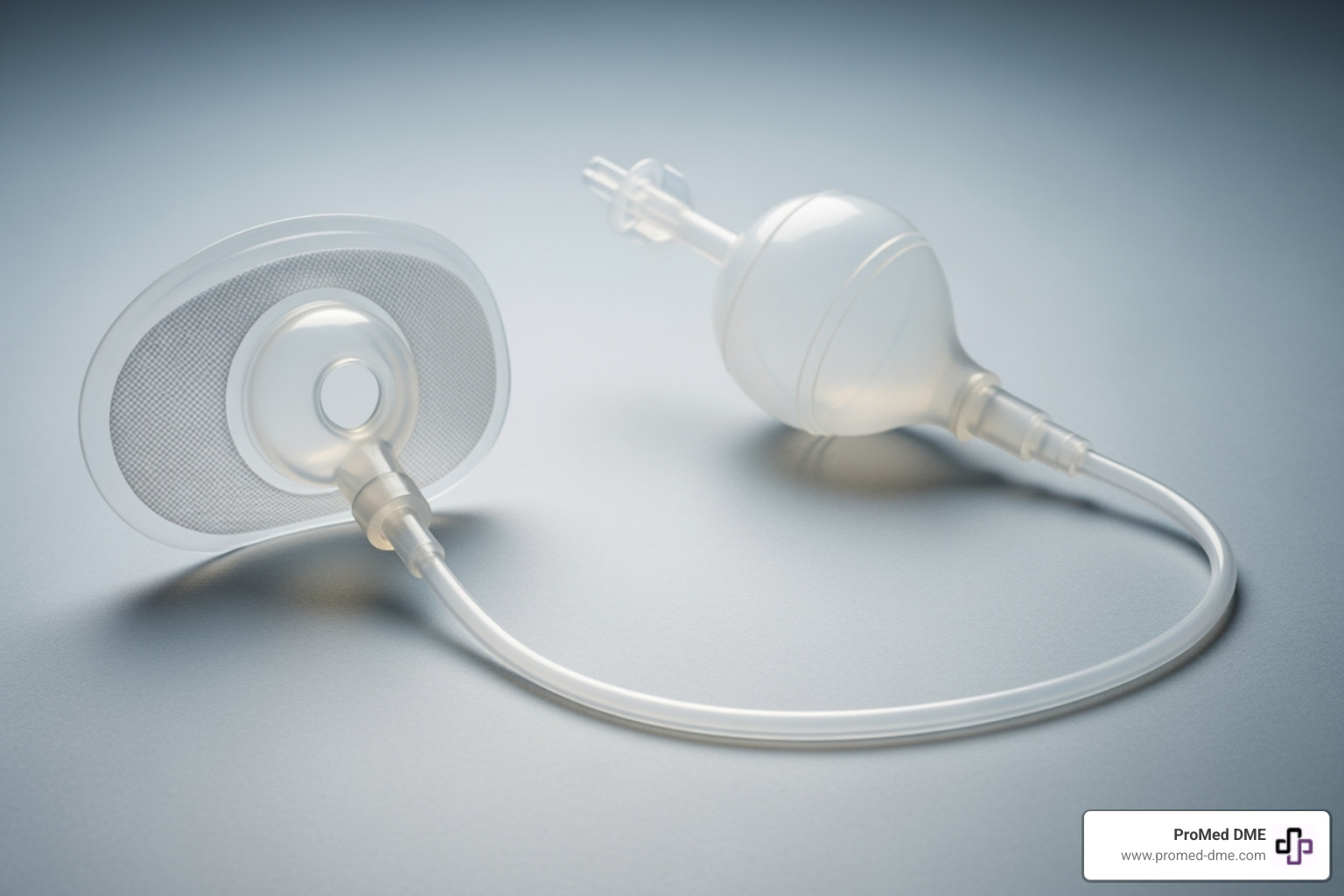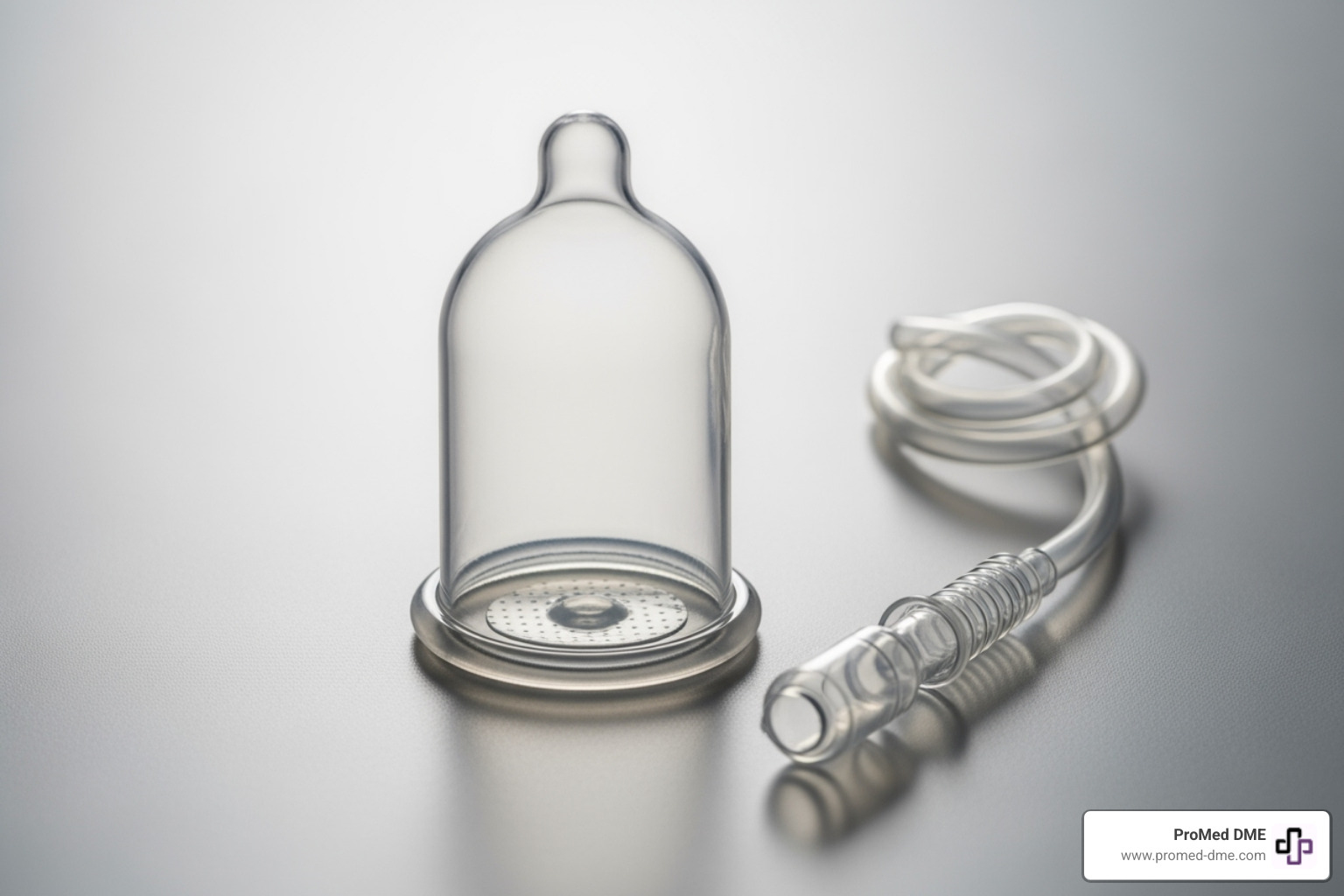Mastering PICC Line Measurements: A Practical Approach
Ensuring Proper PICC Line Placement: Key Measurements
Understanding how to measure PICC line external catheter length is crucial for ensuring that the catheter is both properly placed and functioning correctly. For those looking for a quick answer, here’s a simple step-by-step:
- Gather Supplies: Use a flexible measuring tape or ruler.
- Locate the Insertion Site: Typically in the upper arm near the elbow.
- Trace the Catheter: Carefully run your fingers along the external length.
- Measure the Length: From the insertion site to the end of the external portion.
- Record the Measurement: Document the length for future reference.
Why is this important?
A peripherally inserted central catheter (PICC) line is a thin, flexible tube that provides easy access to a vein for medications or nutrients. Measuring the external length of a PICC line is not only essential for placement verification but also for ongoing monitoring. An incorrect measurement can lead to complications like catheter migration or improper medication delivery.
Regularly checking the length ensures the catheter remains in the correct position, preventing potential health issues. If you’re ever in doubt about the correct procedure, consult a healthcare professional for guidance.

Understanding the Basics of PICC Lines
Definition
A Peripherally Inserted Central Catheter (PICC) line is a long, thin tube that's inserted through a vein in your arm and ends in a large vein near your heart. This type of catheter provides easy access to your bloodstream for delivering medications, nutrients, or for drawing blood samples.
Usage
PICC lines are commonly used for:
- Long-term intravenous (IV) therapy: Ideal for patients needing antibiotics, chemotherapy, or total parenteral nutrition (TPN) over an extended period.
- Frequent blood sampling: Simplifies the process of drawing blood for tests.
- Fluid administration: Ensures hydration and nutrient delivery for patients who cannot consume food or liquids orally.
Benefits
PICC lines offer several advantages over traditional IV lines and central venous catheters (CVCs):
- Reduced Infection Risk: PICCs are associated with lower infection rates compared to CVCs, especially for long-term use .
- Less Invasive: Insertion is less invasive and can often be done at the bedside using local anesthesia.
- Long-Term Use: They can remain in place for weeks to months, making them suitable for long-term treatments.
- Patient Comfort: PICC lines are generally more comfortable for patients and allow for greater mobility compared to other types of central lines.
Case Study: In a study conducted at Kaohsiung Medical University Chung-Ho Memorial Hospital, researchers found that PICC lines were particularly beneficial for ICU patients requiring stable and long-term venous access source.
Quote: "It is comfortable & works like a charm in keeping the patient totally dry and clean," said one user, highlighting the comfort and effectiveness of PICC lines in maintaining patient hygiene.
By understanding the basics of PICC lines, you can better appreciate their critical role in medical treatments. Next, we'll dive into the specifics of how to measure the external length of a PICC line to ensure it remains properly placed and functions correctly.
How to Measure PICC Line External Catheter Length
Preparing for Measurement
Before you start measuring the external length of a PICC line, it's crucial to prepare properly. Here’s how:
- Sterile Technique: Ensure a sterile environment to prevent infections. Wash your hands thoroughly and wear sterile gloves.
- Patient Positioning: Position the patient comfortably. The arm with the PICC line should be extended and relaxed. This is typically done with the patient lying down or sitting with their arm on a flat surface.
Measuring the External Length
Measuring the external length of a PICC line involves several steps. Here’s a simple, step-by-step guide:
- Gather Tools: You will need a flexible measuring tape or a ruler. If the PICC line has notch marks, you can use these marks for measurement.
- Locate the Skin Insertion Point: Find where the PICC line enters the skin. This is usually in the upper arm near the elbow bend.
- Trace the Catheter: Gently trace the external portion of the PICC line from the insertion site to the point where it exits the body. Be careful not to pull on the catheter or cause discomfort to the patient.
- Measure the Length: Using the measuring tape or ruler, measure the length of the external portion of the PICC line. Start from the skin insertion point and go to where the catheter exits the body. Make sure to measure along the catheter’s path without stretching it.
- Flexible Tape: Wrap the flexible tape around the catheter if it is not straight or if you need to follow the catheter's curve.
- Notch Marks: If the catheter has notch marks (usually 1 cm apart), count and record the number of visible notch marks. This can be an alternative to using a measuring tape.
- Record the Measurement: Write down the measured length for future reference and monitoring.
Regularly measuring the external length of the PICC line helps ensure it stays in the correct position and can alert you to potential issues like catheter migration.
By following these steps, you can accurately measure the external length of a PICC line, ensuring it functions correctly and remains properly placed. Next, we'll explore key factors that can affect the accuracy of these measurements.
Key Factors Affecting PICC Line Measurement Accuracy
Impact of Patient Movement
Patient movement can greatly affect the accuracy of PICC line measurements. Simple actions like changing arm positions or body movements can cause the catheter to shift. This makes it crucial to measure the external length when the patient is in a consistent, relaxed position.
- Arm Position: The arm should be extended and relaxed to avoid pulling or pushing the catheter. Even slight bending at the elbow can alter the measurement.
- Body Movement: Encourage the patient to stay still during the measurement to prevent any displacement of the catheter.
Importance of Accurate Measurement
Accurate measurement is vital for several reasons:
- Patient Anatomy: Variations in anatomy, such as prominent chest wall tissues or breast tissue, can cause overestimation or underestimation of the catheter length. A study highlighted that traditional methods might overestimate the catheter length in patients with prominent chest wall tissues.
- Catheter Type: Different types of catheters may have varying flexibility and lengths. Ensure you know the specific type of catheter being used to apply the correct measurement technique.
- Measurement Errors: Errors can occur if the measuring tape is not aligned properly or if the catheter is stretched during measurement. Always measure along the path of the catheter without stretching it.
Malposition Risks and Complication Prevention
Incorrect measurements can lead to catheter malposition, which poses significant risks:
- Malposition Risks: If the catheter is too long or too short, it might not reach the desired location in the vein. This can lead to complications such as thrombosis or catheter malfunction. For instance, a study found that a catheter tip positioned higher than 4 cm above the cavoatrial junction increased the risk of malfunction and thrombosis.
- Complication Prevention: Regular and accurate measurements help in early detection of any migration or displacement. This is crucial in preventing severe complications. Utilizing advanced tools like ultrasonography or fluoroscopy can aid in confirming the catheter tip's position and ensuring it is placed correctly.
Next, we'll delve into advanced techniques and tools that can enhance the accuracy of PICC line measurements.
Advanced Techniques and Tools for PICC Line Measurement
Utilizing Ultrasonography
Ultrasonography is a powerful tool for measuring and placing PICC lines. Real-time imaging allows healthcare providers to see veins and the catheter as it moves through the body. This makes it easier to select the best vein and ensure the catheter is positioned correctly.
Benefits of Ultrasonography:
- Real-time Imaging: Provides an immediate view of the catheter and veins.
- Vein Selection: Helps identify the largest and most suitable vein for insertion.
- Improved Accuracy: Reduces the chances of complications by ensuring correct placement.
Benefits of Fluoroscopy
Fluoroscopy is another advanced technique used to confirm the position of the PICC line. It uses continuous X-ray imaging to guide the catheter to the correct location.
Advantages of Fluoroscopy:
- Carina Bifurcation: Helps in identifying the carina, an anatomical landmark, to ensure the catheter tip is placed at the right spot.
- Tip Confirmation: Ensures that the catheter tip is in the lower third of the superior vena cava (SVC), close to the right atrium.
- Reduced Risk: Minimizes the risk of catheter malposition and related complications.
ECG Guidance
Electrocardiogram (ECG) guidance is a modern method that uses the heart's electrical signals to confirm the catheter tip's placement. This technique is especially useful when other imaging tools are not available.
Key Points of ECG Guidance:
- Real-time Feedback: Provides immediate confirmation of the catheter tip's location.
- Enhanced Safety: Reduces the need for additional X-rays or ultrasounds.
- Efficiency: Speeds up the process of PICC line placement, making it less cumbersome for both the patient and the healthcare provider.
Using these advanced techniques and tools can significantly improve the accuracy of PICC line measurements and placements. This leads to better patient outcomes and fewer complications.
Next, we'll address some frequently asked questions about PICC line measurements.
Frequently Asked Questions about PICC Line Measurements
Why is it important to measure the external length of a PICC?
Measuring the external length of a PICC line is crucial for several reasons:
- Ensures Proper Placement: Accurate measurement helps confirm that the catheter tip is in the correct position, typically at the superior vena cava-right atrium junction.
- Prevents Complications: Incorrect positioning can lead to complications like thrombosis, infection, or catheter malfunction.
- Monitors Migration: Regular measurement can detect any movement of the catheter, ensuring it remains in the optimal position for effective treatment.
What is the formula for PICC line length?
The formula for calculating the proper length of a PICC line involves measuring specific body landmarks. One effective formula developed through research is:
PICC Length = 25.0 + 0.5 × (Clavicle Length) + 0.6 × (Sternum Length)
This formula considers the lengths of the clavicle and sternum to estimate the appropriate depth for the catheter tip, ensuring accurate placement.
How long should a PICC line be in?
The duration a PICC line remains in place depends on the patient's medical needs and the type of treatment:
- Short-Term Use: For short-term treatments like antibiotics or hydration, PICC lines may be used for a few weeks.
- Long-Term Use: For long-term treatments such as chemotherapy or total parenteral nutrition, PICC lines can remain in place for several months, provided they are monitored and maintained properly.
Regular check-ups and proper care are essential to ensure the PICC line remains functional and reduces the risk of complications.
Next, we'll explore some key factors that affect the accuracy of PICC line measurements.
Conclusion
At ProMed DME, we understand the importance of accurate PICC line measurements for optimal patient care. Our commitment to quality and customer support sets us apart in the field of medical equipment.
ProMed DME
We offer a wide range of PICC line supplies and accessories to ensure that healthcare providers have everything they need for successful catheter placement and maintenance. Our products are designed with patient safety and comfort in mind, helping to minimize complications and improve outcomes.
Customer Support
Our dedicated customer support team is always ready to assist. Whether you have questions about product selection or need guidance on proper usage, we're here to help. We also offer one-on-one consultations to address your specific needs and ensure you have the right tools for the job.
Quality Assurance
Quality is at the heart of what we do. All our products undergo rigorous testing to meet the highest standards of safety and effectiveness. We work closely with healthcare professionals to ensure our equipment is reliable and easy to use, helping you provide the best care possible.
For more information on our products and services, visit our external catheters page.
Thank you for trusting ProMed DME with your healthcare needs. We're honored to be part of your journey toward optimal health and effective catheter care.
By focusing on these key areas, we aim to support healthcare providers in achieving accurate and effective PICC line measurements, ensuring the best possible outcomes for patients.
Related Resources & Articles
Stay informed with our informative blog posts.
Discover the ProMed Advantage
& Try Our Products
We offer free shipping and legendary customer service to ensure you receive the
best DME products for your needs.



